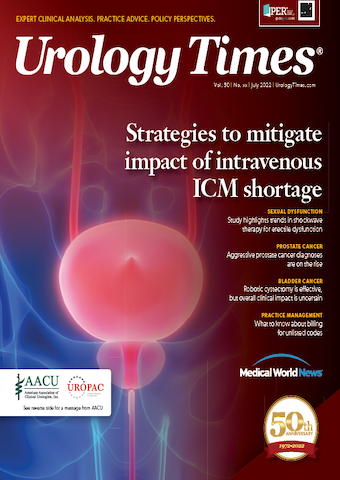Publication
Article
Urology Times Journal
Patient alleged doctor removed wrong testicle during surgery
Author(s):
Expert states less-invasive options should have been considered.
Acacia Brush Perko, Esq

On May 23, 2013, a 54-year-old man presented to a urologist with pain in his right testicle. An ultrasound showed damage to the testicle, including scarring and atrophy. Approximately 15 years earlier, the patient had been accidentally kicked in the testicle by his daughter, who has cerebral palsy.
The urologist determined the patient would benefit from having the right testicle removed, as well as having the right spermatic cord and left vas deferens removed (resulting in a vasectomy of the left testicle). However, during the June 11 procedure, the urologist improperly removed the left testicle and performed a vasectomy on the right testicle.
The following day, the urologist informed the patient that the wrong testicle may have been removed. An ultrasound was later performed and confirmed the right testicle remained. The patient did not return to the urologist, but instead consulted with his primary care physician. After his swelling diminished, his pain and discomfort returned to his right testicle.
The patient-plaintiff filed suit against the urologist and his employer hospital, alleging the urologist performed the surgery when it was not proper for him to do so and performed the surgery in a negligent and reckless manner, amounting to medical malpractice. The plaintiff alleged that he was fearful that he would have to undergo another surgery and removal of his right testicle, and that he would require hormone therapy for the remainder of his life. He further alleged that prior to surgery, if something came into contact with his right testicle during intercourse, it would cause him severe pain that would cause him to lose his erection. The plaintiff alleged that this occurred more frequently following surgery. He further alleged that the surgery caused him embarrassment, anxiety, and depression, for which he required 6 months’ counseling.
During a 3-day jury trial, the plaintiff’s expert in urology maintained that the urologist failed to offer alternative treatments before proceeding with the drastic option of removing the testicle. Oral medication, spermatic cord injections, and microsurgery were all less-invasive options the urologist should have considered and pursued before the orchiectomy, the expert stated.
According to an operating room nurse, she had returned to the operating room during the surgery when she looked at the pathology report, which noted that the specimen removed was the left testicle. She then looked at the consent form, which noted a right orchiectomy. To reconcile the discrepancy, she approached the urologist, who confirmed the contents of the pathology report and consent form. He then backed away from the operating table and sat down on the floor for a period, according to the nurse. He eventually got up, put on new gloves, resterilized himself, and completed the surgery.
The plaintiff’s counsel cited the urologist’s postoperative report, which stated, “At this point, it appeared the left testicle and cord may have been removed instead of the right one.” The plaintiff’s expert in urology testified that the urologist removed the wrong testicle because he failed to track or palpate the right spermatic cord up into the body, which the urologist admitted he failed to do. The right spermatic cord exits the external ring and is approximately 1 in to the right of the penis. If the physician tracks the cord, he will know whether he is on the left or right side. The expert concluded that the urologist was reckless when he assumed he cut the right spermatic cord without confirmation.
In defense, the urologist testified that he noticed there was a problem when he attempted to perform the left vasectomy and the left testicle was missing. He maintained that he believed he removed the right testicle, as he removed the testicle that was on the right side of the scrotum. He testified that the testicle had a spermatic cord that led to the left side of the body. On cross-examination, the urologist conceded that if he, in fact, removed the left testicle when the right testicle was planned for removal, that he breached the standard of care.
The plaintiff’s expert in urology refuted the urologist’s explanation that the left spermatic cord crossed with the right. According to the expert, that is anatomically impossible, as the scrotal septum prevents the testicles from moving to different sides, in addition to the fact that the spermatic cords are not long enough to allow such an occurrence.
The hospital admitted the urologist had been an agent of the hospital at the time of the surgery, and it was responsible for any negligence committed. After a 3-day trial, the jury deliberated 80 minutes before rendering a plaintiff’s verdict, finding that the urologist breached the standard of care and proximately caused the plaintiff injury. The jurors awarded $870,000.
LEGAL PERSPECTIVE: Although the urologist’s testimony that he thought he was removing the right testicle may have been believable to some jurors, conceding that he breached the standard of care in removing the wrong testicle likely sealed his fate.

Newsletter
Stay current with the latest urology news and practice-changing insights — sign up now for the essential updates every urologist needs.



























